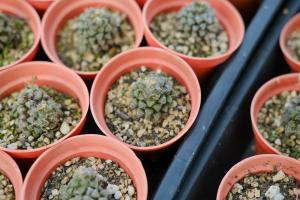Introduction
Cement plants are crucial to infrastructure development all over the world. They produce the most commonly used building material in the world, concrete. However, cement plants have been known to produce high levels of carbon dioxide (CO2), a greenhouse gas that contributes to global warming. In this article, we will explore how CO2 is produced in a cement plant.
The Cement Making Process
Cement production involves several stages. Raw materials such as limestone, clay, and sand are quarried and crushed into a fine powder. This powder is then mixed with water and other additives to produce a slurry. The slurry is then fed into a kiln where it is heated to extremely high temperatures. The heat causes a series of chemical reactions which result in the formation of clinker. Clinker is then ground into a fine powder known as cement.
CO2 Production in Cement Plants
The production of cement is a highly energy-intensive process. In fact, cement production is responsible for approximately 7% of global CO2 emissions. CO2 is mainly produced during the calcination of the raw materials and the combustion of fuels required for the heating of the kiln. The calcination process involves the breakdown of calcium carbonate (CaCO3) into calcium oxide (CaO) and CO2. The fuels used in the cement-making process include coal, oil, and natural gas, which when burned, produce large amounts of CO2.
Ways to Reduce CO2 Emissions
There are several ways cement plants can reduce their CO2 emissions. One way is by using alternative fuels, such as biomass or waste products, instead of fossil fuels. This reduces CO2 emissions by avoiding the burning of fossil fuels. Additionally, cement plants can adopt energy-efficient processes, such as waste heat recovery, to reduce their energy consumption and, consequently, their CO2 emissions. Lastly, carbon capture and storage (CCS) technologies can be implemented to capture CO2 emissions from the cement-making process and store them underground.
Conclusion
The cement-making process is responsible for significant CO2 emissions. Cement plants can take steps to reduce their carbon footprint by using alternative fuels, implementing energy-efficient processes, and adopting CCS technologies. These measures can help reduce the impact of cement production on the environment and contribute to a more sustainable future.

 how many times do yo...
how many times do yo... how many planted tre...
how many planted tre... how many pine trees ...
how many pine trees ... how many pecan trees...
how many pecan trees... how many plants comp...
how many plants comp... how many plants can ...
how many plants can ... how many plants and ...
how many plants and ... how many pepper plan...
how many pepper plan...






























